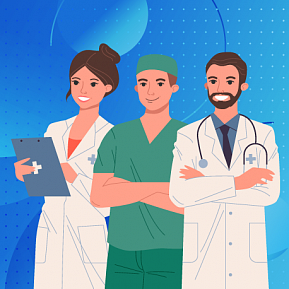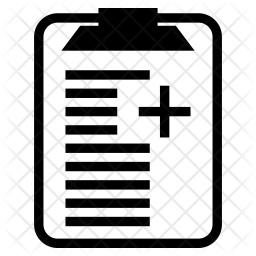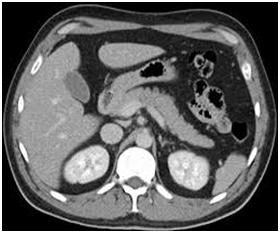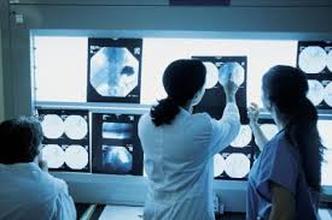Pre-rotation Test: Nis Er

How much do you known about Professionalism and Non-interpretive Skills in Radiology? Please answer these true (T) or false (T) questions.
- 1.
Profession is different from occupation in that the former has a rule of law to follow
- A.
True
- B.
False
Correct Answer
B. FalseExplanation
Profession is not different from occupation in that the former has a rule of law to follow. Both profession and occupation can have rules and regulations that need to be followed depending on the specific field or industry. The distinction between profession and occupation lies in the level of specialized knowledge, education, and training required. Professions typically require higher levels of education, specialized skills, and often have a governing body that sets standards and regulations. Occupations, on the other hand, can encompass a broader range of jobs that may not require the same level of education or specialized knowledge. Therefore, the statement is false.Rate this question:
-
- 2.
One of greatest challenges of radiologist in current practice is the decrease of interaction with referring physicians and patients
- A.
True
- B.
False
Correct Answer
A. TrueExplanation
The statement is true because with the advancement of technology and the increasing use of Picture Archiving and Communication Systems (PACS), radiologists now primarily communicate with referring physicians through electronic means, such as email or online portals, rather than face-to-face interactions. This decrease in direct interaction can lead to potential challenges in understanding the clinical context of the imaging studies and may impact patient care.Rate this question:
-
- 3.
Data in electronic medical records are non-private and can be accessed by any physicians in the hospital regardless of their role
- A.
True
- B.
False
Correct Answer
B. FalseExplanation
The statement is false because data in electronic medical records are private and can only be accessed by authorized individuals such as physicians, nurses, and other healthcare professionals who have a legitimate need for the information in order to provide appropriate care to the patient. Access to electronic medical records is typically restricted and protected by security measures to maintain patient confidentiality and comply with privacy regulations such as HIPAA.Rate this question:
-
- 4.
As a physician, it is okay to receive a gift of up to 5,000 Baht from patients, patient’s family or pharmaceutical/med tech industry
- A.
True
- B.
False
Correct Answer
B. FalseExplanation
Physicians should not accept gifts from patients, patient's family, or the pharmaceutical/med tech industry, regardless of the amount. Accepting gifts can create conflicts of interest and compromise the objectivity and integrity of the physician-patient relationship. It is important for physicians to maintain ethical standards and prioritize the best interests of their patients over personal gain.Rate this question:
-
- 5.
In an elevator, it is okay to talk to your friend about a patient without mentioning the patient’s name to respect patient’s confidentiality
- A.
True
- B.
False
Correct Answer
B. FalseExplanation
It is not okay to talk about a patient in an elevator, even without mentioning their name. Elevators are public spaces and there is always a risk of someone overhearing the conversation. It is important to respect patient confidentiality at all times and only discuss patient information in private, secure areas.Rate this question:
-
- 6.
Fasting for a minimum of 4 hours is required prior to all contrast- enhanced CT scan
- A.
True
- B.
False
Correct Answer
B. FalseExplanation
Fasting for a minimum of 4 hours is not required prior to all contrast-enhanced CT scans. While fasting may be necessary for certain types of CT scans, such as those involving the abdomen or pelvis, it is not a requirement for all contrast-enhanced CT scans. The need for fasting will depend on the specific instructions given by the healthcare provider or radiologist.Rate this question:
-
- 7.
In preparation for contrast-enhanced CT, serum creatinine can be omitted in patients who are less than 65 years old without known underlying renal disease
- A.
True
- B.
False
Correct Answer
A. TrueExplanation
Patients who are less than 65 years old and do not have known underlying renal disease are at a lower risk of developing contrast-induced nephropathy (CIN) during contrast-enhanced CT. Therefore, it is safe to omit the measurement of serum creatinine in these patients before the procedure. However, it is important to note that this recommendation may vary depending on the specific guidelines and protocols followed by different healthcare institutions.Rate this question:
-
- 8.
The most dangerous aspect of withholding a CT scan in emergent patients for serum creatinine or premedication for hypersensitivity reaction is the risk associated with delayed diagnosis
- A.
True
- B.
False
Correct Answer
A. TrueExplanation
Withholding a CT scan in emergent patients for serum creatinine or premedication for hypersensitivity reaction can be dangerous because it can lead to a delayed diagnosis. CT scans are often critical in identifying and diagnosing emergent conditions, and delaying the scan due to concerns about serum creatinine or hypersensitivity reaction can result in a delay in providing appropriate treatment. This delay can increase the risk to the patient and potentially worsen their condition. Therefore, it is important not to withhold a CT scan in emergent patients for these reasons.Rate this question:
-
- 9.
Arterial-phase imaging is required in CT for blunt abdominal trauma
- A.
True
- B.
False
Correct Answer
A. TrueExplanation
Arterial-phase imaging is required in CT for blunt abdominal trauma because it allows for better visualization of the vasculature and can help identify active bleeding or vascular injuries. This phase of imaging provides detailed information about the blood flow and can help guide further management and treatment decisions. By capturing images during the arterial phase, CT can provide valuable information about the extent of injury and help in planning appropriate interventions. Therefore, it is necessary to perform arterial-phase imaging in CT for blunt abdominal trauma.Rate this question:
-
- 10.
Duty of a radiologist ends at the time of radiology report verification/finalization
- A.
True
- B.
False
Correct Answer
B. FalseExplanation
The statement that the duty of a radiologist ends at the time of radiology report verification/finalization is false. A radiologist's duty extends beyond just verifying and finalizing the report. They are responsible for interpreting the images, providing accurate diagnoses, and communicating the findings to the referring physician or healthcare team. They may also be involved in follow-up discussions, consultations, and further imaging recommendations. Thus, their responsibilities continue even after the report is finalized.Rate this question:
-
Quiz Review Timeline +
Our quizzes are rigorously reviewed, monitored and continuously updated by our expert board to maintain accuracy, relevance, and timeliness.
-
Current Version
-
Aug 24, 2023Quiz Edited by
ProProfs Editorial Team -
Oct 12, 2020Quiz Created by
Rathachai
- Aptitude Test Quizzes
- Course Test Quizzes
- Driving Test Quizzes
- English Test Quizzes
- FCAT Quizzes
- General Knowledge Quizzes
- Intelligence Test Quizzes
- Medical Test Quizzes
- Mock Test Quizzes
- Philosophy Test Quizzes
- Practice Test Quizzes
- Pretest Quizzes
- Safety Test Quizzes
- Skill Assessment Quizzes
- Spelling Test Quizzes
- Standardized Test Quizzes
 Back to top
Back to top












